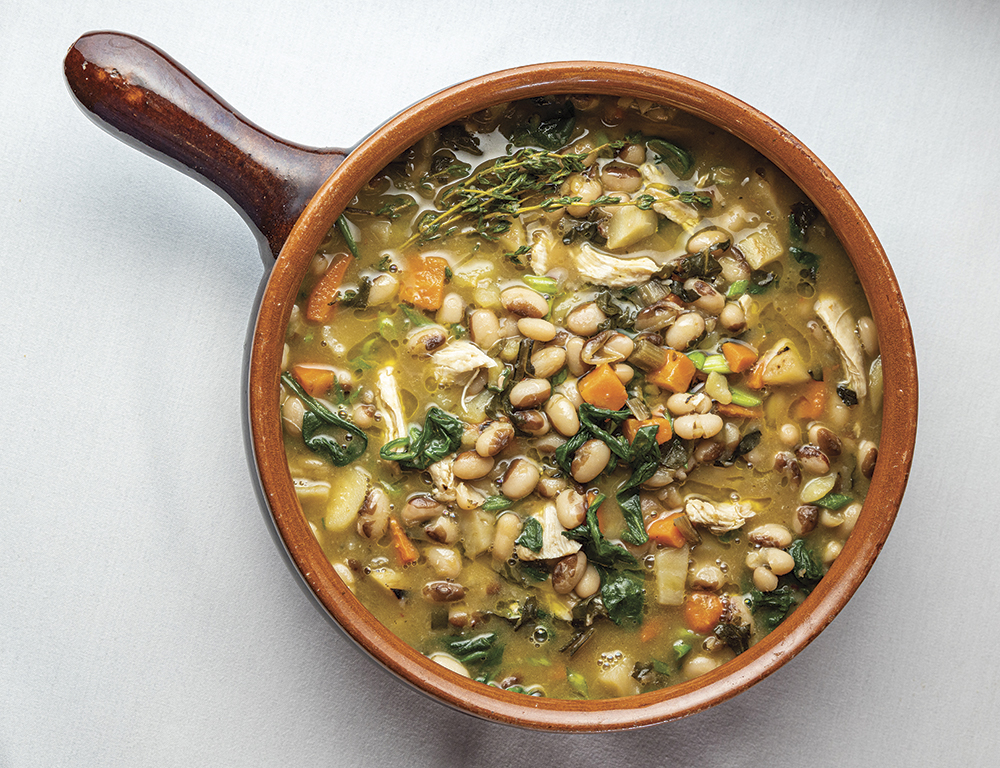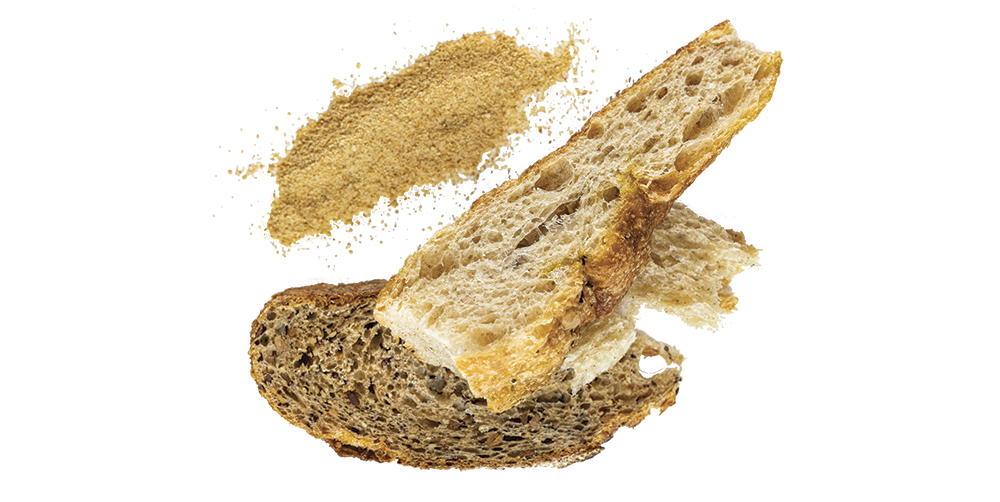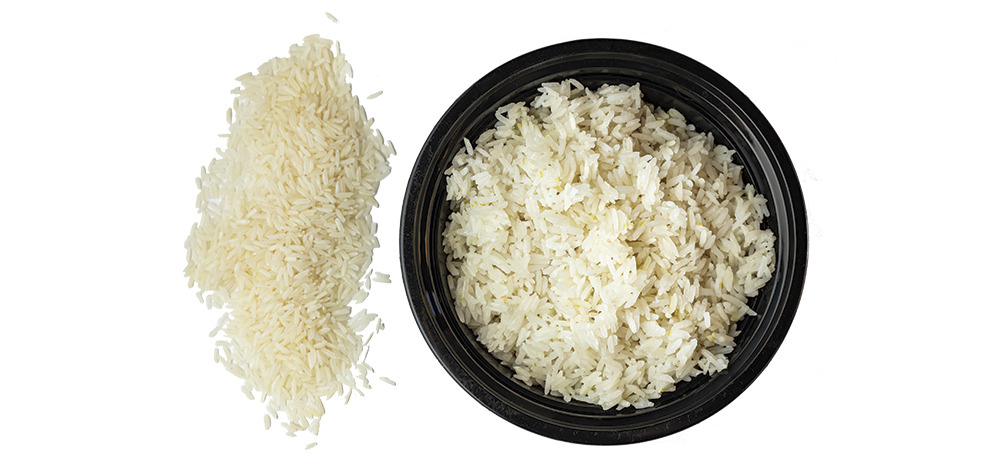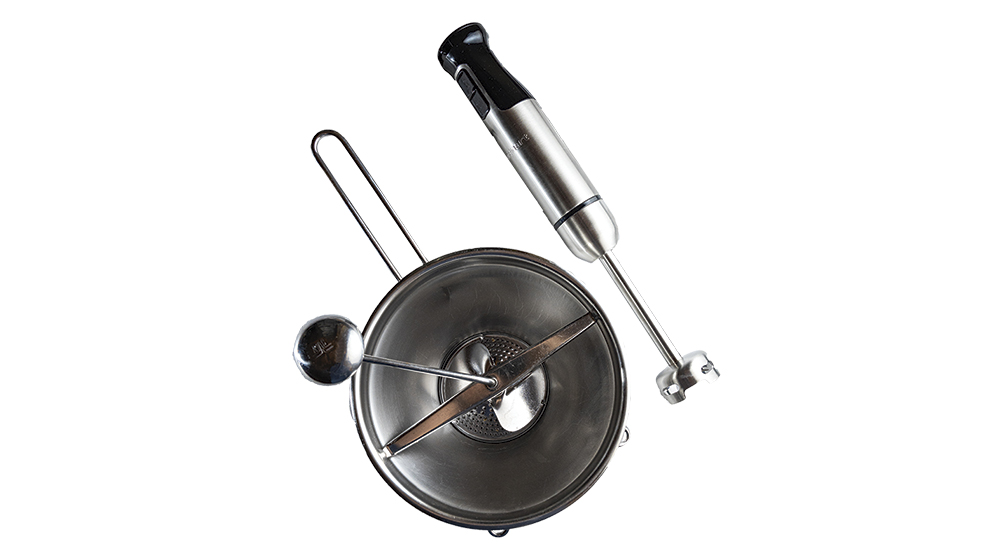
As the pandemic of 2020 blurs into the pandemic of 2021, we could all use some hugs. It has been a year where we cook more at home, avoid going to the store as frequently, and try to make the most of what we have in our pantries and refrigerators. There may be a light at the end of the tunnel, but with the cold, dreary winter weather upon us, a warm bowl of comforting, velvety soup—made with ingredients and leftovers we have at hand—can be the little hug from the inside that we all need to help us embrace the new year.
Cooking in a pandemic is an opportunity to learn appreciation for creativity with what is available. I despise food waste and finding tasty ways to use up remnants of meals gives me a tremendous sense of satisfaction. In fact, I frequently make soups out of leftovers just to avoid waste. Soups are an ideal use because they freeze beautifully and are always welcome on days when you don’t have time or desire to cook. And when it’s cold outside, nothing comforts quite like a steaming silken stew.
Leftover Roast Chicken (or Whatever) Soup
One of the qualities I look for in a great soup is a velvety texture, rich and enveloping like a favorite, well-worn overstuffed armchair. There are a number of ways to achieve this texture, most of them involving starch. If you have leftover potatoes of some sort (roasted, mashed, boiled, etc.), you’re on your way to great texture.*
Begin your soup by heating a pot with a bit of oil (or perhaps—if you have that leftover roast chicken or whatever—the congealed fat in the roasting pan). Add the potatoes, crushing them so they have lots of surface area to come in contact with the bottom of the pot. Allow the sizzling potatoes to become golden brown and stick to the bottom of the pan. Scrape up all of the brown bits and stir the potatoes around again to allow them to stick and brown some more. Cooking the potato this way will deepen the flavor and give that velvety texture to the finished soup. If you don’t have potato, you could use another starch like split pea or leftover cooked rice (see Pantry), or the delicious roasted sweet potatoes you just couldn’t bear to toss out even though you’ve eaten them at two different meals already this week. Just cook them in the same fashion, browning them a little which will add complexity to the finished soup and help break them down to release their starchy elements.
Next, add any vegetables you have, like the carrots and celery left from the roast, the half of an onion and the radishes you didn’t use from the salad you made at lunch, or the green beans you brought home from that restaurant where you couldn’t eat another bite. One advantage of using previously cooked ingredients (leftovers) is that they save time—they’re already cooked. This is also a good place to add neglected and wilt-y (but not discolored) bagged salad greens, beet tops, or that half a cabbage head you don’t know what to do with. Just make sure everything you add is still good enough to eat. Any leftover cooked (maybe canned) beans? They’re a magical and filling addition.
Your soup will need liquid, so if you have a little leftover broth of some kind, use that. If it is exceptionally flavorful, I save the water from cooking potatoes, beans, rice, or blanching vegetables to use when making my next batch of soup. If all else fails, a can or two of broth or even water will suffice. Continue cooking for a bit, bringing everything to a boil.
As you approach the finish line, add any cooked proteins, like the leftover roast chicken, shredded, or sausages cut into bite sized pieces. Uncooked ground meats can be seasoned, or sausages can be taken out of their casings and shaped into small meatballs and added to cook in and flavor the broth. If you’re lucky enough to have it, don’t forget the jelly in the bottom of the roasting pan—it’s pure flavor and unctuous texture.
Now, taste the soup. What does it need? Salt, most likely. Maybe, it needs a little piquant heat from black pepper. If it seems a little unfocused, I like to unify the parts under a common theme, like a little cumin and dried oregano for a little south-of-the-border flavor, or with fennel and crushed red pepper—don’t forget the splash of olive oil and freshly grated cheese—for an Italian feel. A dash of fish sauce, chili oil, and some cilantro, scallions, and mint could transport you to Asia. Is it the best soup you’ve ever tasted? Maybe yes, maybe no. But hopefully, it will help you face the day and embrace the new year.
*If you would like to begin with raw potato, just dice it up and cook as instructed for the precooked potato—it will just take more time.
In Your Pantry
Shortcuts to Comfort
The texture of a soup can have an enormous effect on its perceived flavor. Watery soups can be magically (and quite easily and quickly) transformed into something robust, fortifying, and comforting with the use of one or more of these elements:

Stale Bread / Breadcrumbs
Just because bread is stale doesn’t mean it is useless. Actually, for many applications, stale bread works better than fresh (think croutons and crostini). Old bread can find new life in soups by being added towards the end of cooking. Adding cubes of bread for the last 15-20 minutes will allow the bread to begin to melt into and fortify the broth (like Italian ribollita) or topping a soup with slices of stale bread and cheese and baking for the last minutes (as in classic French Onion soup) will create a crunchy cheesy crust. Bread crumbs are great thickeners for thin broths because they take very little cooking time to achieve wondrous results—the flour in bread and bread crumbs is already cooked, so it doesn’t have the “raw” taste additives like cornstarch and flour have without extended cooking times.

Rice
Leftover rice can be a tasty addition to soups—but you need to know the lowdown on that rice. Cooked rice at room temperature is a perfect petri dish for Bacillus cereus, a spore that can survive cooking and given enough time and the proper environment, cause food poisoning. That leftover rice from your carry-out meal that sat on the coffee table for five hours isn’t a good candidate for recycling, except maybe for compost. Always refrigerate leftover rice as soon as possible after serving, and when reusing, make sure it is quickly reheated and cooked again. To use, briefly boil the rice in the soup and serve immediately for a soup with a little bite or reheat the rice in some of the liquid and purée it before adding back to the soup for a smooth and creamy texture—without the use of cream.

Split Peas and Red Lentils
These quick cooking legumes lend both body and flavor to soups. Just a small handful—after 20 to 30 minutes cooking—will completely dissolve, fortifying and thickening the soup. For a more meaty and savory quality, sauté split peas to toast them briefly before combining with liquid. They acquire an umami-like quality that will make you swear there is a meat broth in use.

Immersion Blender and Food Mill
Immersion blenders and food mills (and food processors and blenders) are perfect tools for physically adjusting the texture of a soup. An immersion blender (blender on a stick) can simply be inserted into a pot of soup and pulsed a few times to break down some of the ingredients into finer particles that thicken. If there are ingredients (like meatballs) that you don’t want to damage, some of the vegetables and liquid in a soup can be selectively ladled into a food mill and processed right back into the soup pot. Food processors and blenders can be used in the same manner—but generally result in more dirty dishes.

